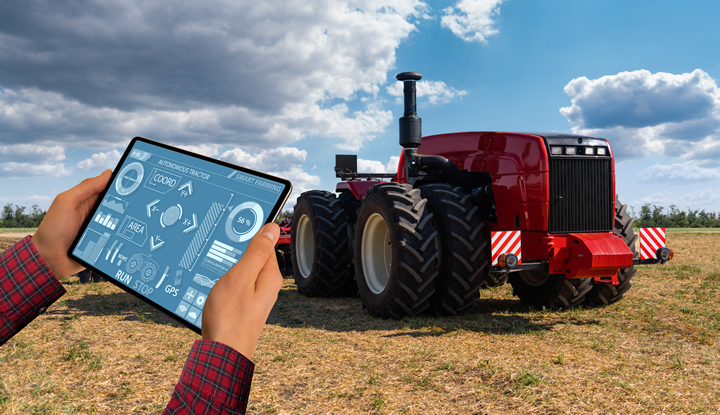The Trend Toward Equipment Versatility Is Projected to Continue: Here's Why

In a labor-intensive environment such as agriculture, having the best equipment that can do the demanding tasks and simplify the farming process is crucial. Dedicated machines used to be the staple in a farmer's machinery fleet, but this is shifting as the trend toward versatility brings changes to the table.
Manufacturers continue to develop machinery to refine its efficiency and offer more benefits to users. Older pieces are optimized for a specific purpose, but modern ones are capable of tackling several tasks to improve processes and practices in agriculture and other industries. Delve into why this innovation is happening.
Factors Driving the Trend Toward Versatility
What essentials tip the scale toward a one-size-fits-all trend in machinery? Here are some factors influencing the swing.
1. Technological Advancements
Technology has touched industries from agriculture to construction and pretty much every segment in between. Today's construction-heavy equipment significantly differs from those created in the last few decades — it's similar in the agricultural sphere.
Modern, versatile equipment is continuously innovated to solve the daily troubles of farmers and make their jobs easier, making them preferable.
2. Changing Climate Patterns
Agriculture contributes 11% of greenhouse gas emissions through operations and electricity end-use. One significant reason for the shift to versatile equipment is the changing patterns in the climate that trigger global warming, rising sea levels and natural disasters.
To achieve better yields, farmers use high-energy-consuming machines and fertilizers that release environmentally degrading gases. However, the latest tools are designed not only to assist agricultural professionals in their jobs but also to alleviate climate change and protect the environment.
3. Shift Towards Sustainable Agriculture
Global green movements have swept through all domains, including agriculture. A great example is the application of fleet management, which streamlines the performance monitoring of farm machinery and vehicles. With advanced GPS and telemetry systems, farmers can collect data such as fuel usage, engine speed and maintenance schedule to optimize use. Higher efficiency equates to less fuel and other resources consumed, which supports sustainability.
Examples of Widely-Used Versatile Equipment in Agriculture
The global mulcher market is expected to grow at a compound annual growth rate of 6.19% by 2028, reaching an estimated value of $593.56 million. The small market size shows that technology adoption is slower in agriculture than in other sectors, but it's steady progress.
Below are examples of multipurpose tools transforming the way of farming.
1. Agricultural Drones
When it comes to spraying, these tools are much lighter than a tractor or an ATV, and are more energy efficient, which is good for the environment. They're usable on spraying operations across varying terrains and crop sizes, from large, tall trees to shallow root plants.
As simple as they seem, they can do more than apply phytosanitary treatments. They can survey topography, monitor the condition of crops, collect soil and water samples, and optimize field management.
2. Skid Steers
The versatile feature of a skid steer loader is its changeable front, which offers endless attachment options to perform numerous functions regardless of the weather. The snow blower helps clear space during winter, while the hydraulic angle blade is great for tilling and breaking up compacted ground on hot days. Here are the types of attachments and their use:
- Buckets: Scoop dirt, do light digging and clean animal pens
- Grapples: Brush debris, remove rocks and lift heavy materials
- Concrete equipment: Haul concrete and mix cement with a wheelbarrow
- Brooms: Cleans across any mess in a single sweep
- Bale spears: Move hay bales
- Snow equipment: Clear away, push and move snow off-site
- Soil conditioner: Grade, level and rake soil
- Tree puller: Uproot stumps and pull out fences
- Land plane: Break up hard ground and irate and till the soil
- Pallet fork: Get rid of brush and logs and move hay bales
- Augers: Can be used to drill and handle tougher ground
- Trenchers: Can dig up to 60 inches, lay pipes and repair roads
Farmers can do many things with a skid steer, making this tool a great addition to the fleet. For instance, they can easily convert a woodland section for farming with a tree puller. Naturally, a tractor is a better option for uprooting trees over 5 inches in diameter, but this attachment in front of the skid steer is a good alternative for trees 5 inches and below.
3. Robotic Dairy Systems
The tasks of dairy farmers have always been labor intensive, from milking to feeding to monitoring the health of each animal. Robotics is making its way in this agricultural domain, presenting new technologies to reduce manual intervention and automate as many tasks as possible. Recent innovations include the following:
- Voluntary milking system: Cows can voluntarily enter in the unit where they're milked using robotic arms. Farmers can delegate the preparation, milking routine and strict scheduling of such a task to a robot.
- Electronic feeders and concentrate dispensers: These tools automate individual feeding and ensure the herd gets proper nutrition, enhancing dairy cow management.
- Activity monitors and heat detection systems: These technologies allow farmers to track each cow's reproductive health and activity, enabling them to identify when the animals are in heat and maximize their productivity.
Advanced solutions are consistently employed, with each update boasting better, more versatile equipment to improve the lives of people who work in the industry.
Benefits of Equipment Versatility in Any Industry
Some people may disagree that versatility is a strong advantage because — like multitasking — better productivity is achievable by doing only one thing. But thanks to technology, manufacturers can create multifunctional equipment without drawbacks. Here are ways in which versatility tools can benefit users.
1. Increased Operational Efficiency
The scope of functionality of versatile equipment is broader, which means people can use it for two or more purposes. Additionally, it's a space saver.
2. Enhanced Adaptability to Diverse Farm Operations
Like the skid steer, the flexibility feature allows farmers to do various loading and unloading tasks without considerable modifications. People can use the equipment to do many things for them.
3. Cost-Effectiveness and Improved ROI
Versatile tools may require a higher upfront cost but offer savings for the long term. Finance-wise, a 3-in-1 tool is often more practical than purchasing three different specialized machines.
4. Reduced Environmental Impact
Their high efficiency levels make them eco-friendly tools. Many adaptable farming equipment require less power to operate and have low maintenance costs.
Versatile Equipment Trend From 2024 and Beyond
Special-purpose tools tailored for a single function will remain a significant part of the farming machinery fleet. However, versatile equipment will eclipse them as the trend continues for many good reasons — it’s sustainable, efficient and cost-effective.
Repurposable tools will drive positive changes to industry practices and processes. The choice between specialized and versatile equipment depends on the requirements and goals of the intended application.
Comments (0)
This post does not have any comments. Be the first to leave a comment below.
Featured Product

